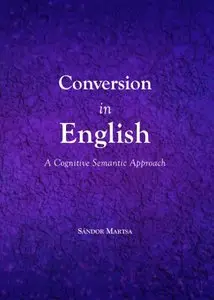Conversion in English: A Cognitive Semantic Approach by Sandor Martsa
English | 2013 | ISBN: 1443849324 | 314 pages | PDF | 2,3 MB
English | 2013 | ISBN: 1443849324 | 314 pages | PDF | 2,3 MB
Drawing on the conceptual metaphor and metonymy theory outlined in works by George Lakoff, Rene Dirven, Gunter Radden and Zoltan Kovecses, Conversion in English: A Cognitive Semantic Approach proposes that the process of conversion in contemporary English is basically a semantic process underlain by a series of conceptual metonymic and metaphoric mappings. In the book, previous interpretations treating conversion as zero-derivation derivation by a zero affix or as syntactically motivated recategorization, or as user-based coinage (relisting) are questioned, for they apparently mistake the effect of conversion, the obligatory change of word class, for its cause, the conceptual reanalysis of extralinguistic reality. It is argued that most conversion processes result from metonymic mappings, whereby, for instance, certain constituents of actions, including agents, patients, and instruments, come to stand for the actions themselves, such as to umpire, to witness, to bicycle, or, conversely, actions come to stand for their constituents like agents (a cheat), patients (a swap) or instruments (a clip), etc. Metonymic mappings of properties onto actions bringing about these properties give rise to deadjectival verbs, such as to black, to clean, to narrow, whereas nouns converted from adjectives arise from metonymic mappings of properties onto categories having these properties, including the rich, the Reds, the unexpected. Specific attention is paid to denominal verbs such as to ape, to beaver away, to rabbit, which seem to be underlain by reciprocal metaphoric mappings between the domains of humans and animals. The book also demonstrates that viewing conversion as the result of conceptual mappings makes it possible to view this process as an instantiation of intercategorial polysemy. It also helps to settle the long-standing debate concerning the issues of directionality and productivity of conversion.



